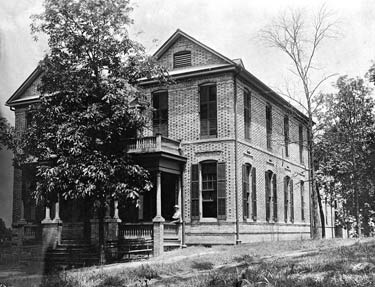Thirty-seven students at Mississippi State succumbed to the flu after contracting the illness – in 1918. In a period of four months, from Sept. 1 to Dec. 31, 1918, over 400,000 people in the U.S. died from the Spanish flu epidemic that swept not only the nation, but the world, according to World Health Organization figures.
Mississippi State, then called Mississippi Agricultural and Mechanical College, resembled more of a military post than a college. It was the height of World War I, and with no obvious end in sight, the U.S. was rapidly minting new lieutenants for the battlefields of France.
Mississippi State became an Army training center after then Gov. Theodore Bilbo offered the assets of the college to the service of the nation, according to “People’s College, A History of Mississippi State.” Classes, social activities and even commencement were cancelled as the main focus of the university became to train soldiers.
A paper in the university archives, written in the 1970s, entitled “The Flu Epidemic of 1918 at A&M, ” contains many firsthand accounts of the outbreak.
One of these accounts, as told by Louise Ramsey in 1976, tells that the campus physician, Dr. Charles Mitchell, was contacted by medical personnel in Washington, D.C. and told to “get ready” for an impending flu outbreak. In the days before antibiotics there was little that could be done to treat those afflicted with flu, especially in rural areas like Mississippi.
There were so many afflicted with the flu when it struck that healthy people to care for the sick were quickly in short supply. Town physicians, a Baptist minister who previously had medical training and even the school veterinarian were quickly drafted into service of the sick. The first casualty of the flu epidemic died on Oct. 5, with 36 more to follow in the coming weeks.
The university was put under quarantine and all public gathering places on campus were put under guard to avoid crowds gathering and further spreading the disease, according to the Oct. 19, 1918 issue of The Reflector (then The College Reflector).
George Infirmary (now George Hall) was where the most critically ill students were taken care of. The two floors of George Hall were used as a de facto triage for the ill students according to an account from Turner Cattledge in the university archive’s paper. The second floor of George Hall was where the less critically ill patients were kept and the first floor was where the critical patients were kept and was known as “the death floor.” As students died and were moved to be embalmed, patients with worsening conditions were moved ominously to the first floor. As the illness ran its course and high fevers caused those afflicted to become delirious, five or six “attendants” were needed at times to hold down those who had become violent from the delirium, according to Ramsey’s account in the “Epidemic” paper.
With so many deaths on campus, a mortician from Aberdeen set up in the basement of George Hall to embalm the bodies of students. Coffins were shipped in via railroad and stacked on the front porch of George Hall. After embalming, the bodies were placed in the coffins and were moved to the then-old Band Hall.
Due to wartime and many students undergoing military training, the bodies of the deceased students were given full military honors and the coffins containing the bodies were taken to the railway depot (now the Stennis Institute for Government) accompanied by a military band, according to the “Epidemic” paper.
Students with less serious cases of the flu and those that were on the road to recovery were taken care of in their dormitories. All of those not afflicted with the flu were used to take care of the ill. Also, volunteers from throughout the area and nurses were brought to campus to care for the sick according to issues of The Reflector published during the epidemic.
University publications The Reflector and Shop Talk struggled to continue to publish. The Reflector published with only half of its staff and Shop Talk completely missed a publication.
As the flu ravaged campus, orders were issued to maintain strict sanitation and avoid contact with as many people as possible. Disinfectants were used in the dormitories to quell the spread of germs. As the epidemic wore on, activities and finally classes were suspended as care for the sick became a prime concern.
Editor’s Note: This is part one in a two-part series on the 1918 influenza outbreak at MSU. Look for part two in the Friday, Sept. 25 edition of The Reflector.
Categories:
Epidemic: Part 1
David Breland
•
September 22, 2009

George Hall, on Lee Boulevard, was the MSU infirmary until it was replaced by the Longest Student Health Center. Students diagnosed during the 1918 flu outbreak were treated there.
0
Donate to The Reflector
Your donation will support the student journalists of Mississippi State University. Your contribution will allow us to purchase equipment and cover our annual website hosting costs.




